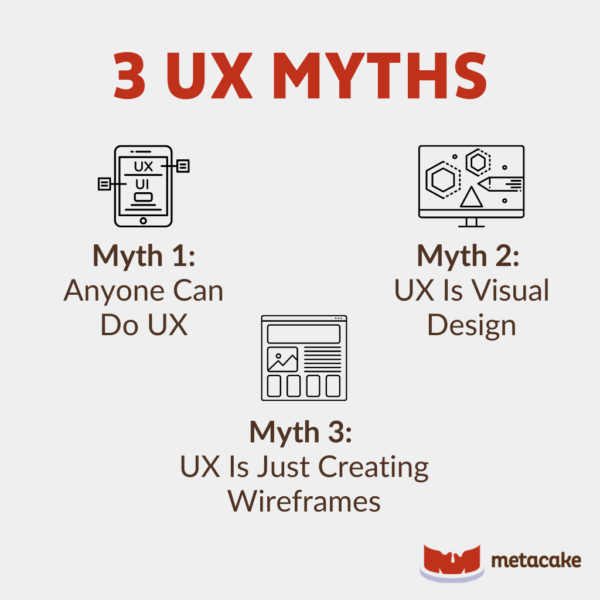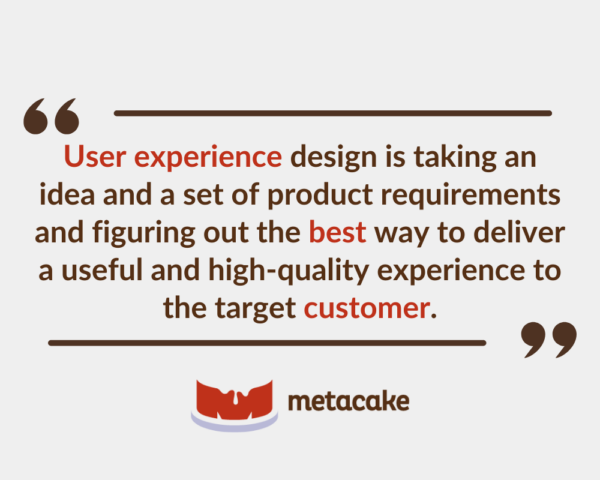
3 UX MYTHS THAT MOST BUSINESSES BELIEVE
It can be hard to keep up with the lingo of the digital world when you’re on the outside. SEO, full-stack, the cloud, social media marketing, retargeting…and on and on it goes.
User experience (UX) is another one of these buzz words.
On one hand, we’re glad that UX has been picked up as a buzz word as of late. It means that companies are now aware of the term and realize they should place more focus on user experience (or customer experience, as we prefer to call it).
On the other hand, now that the term UX is hot, there are UX “experts” all over the place, preying on unsuspecting businesses looking for help.
Here are some of the most common UX myths to watch out for in the ecommerce industry:

Myth 1: Anyone Can Do UX.
In reality, being a UX expert is quite difficult. User experience design is difficult to learn and requires a vast amount of experience. There’s no replacement for time on the job and countless hours of research into UX.
Beyond training, experience, and research, UX design is not a completely learned skill. User experience design is an art, and the skills required are acquired over time. Some people are naturally gifted in UX design, but just like with a visual designer, the craft takes time to develop to a professional level.
Myth 2: UX Is Visual Design
User experience design is part of the design process, but it is more product design than visual design. UX is the process of designing how something works, while visual design is the next step in the process. This is when a graphic designer puts a visual treatment on the functionality and layout that has already been determined.
Many visual designers claim to be qualified UX designers as well, but in our experience, this is rarely the case. Being a great visual designer requires a very different set of skills than being a great user experience designer. It’s not impossible, but it is rare to find an individual that is both skilled at UX design and visual design.
So, as a rule of thumb, your visual designer should not be your UX designer.
Myth 3: UX Is Just Creating Wireframes
Simply put, it’s not. Wireframes are often (but not always) a part of the user experience design process, but they’re simply a representation of several other steps in the experience design process. Believing this myth would be the same as reducing the work of an architect down to the blueprints of a house.
User experience design is taking an idea and a set of product requirements and figuring out the best way to deliver a useful and high-quality experience to the target customer. It requires not only an understanding of what’s technically possible but also of psychology, visual design, and the target customer market.
Now that we’ve busted these UX myths, remember this: user experience design is a very crucial part of the creation of any product, digital or not. It’s also not a one-time thing. User experience design should be happening throughout your entire product design process and should be refined over time, even post-launch.
Want to learn more about what goes into the user experience design process? Check out this interview with our lead UX designer, Justin Davis.




